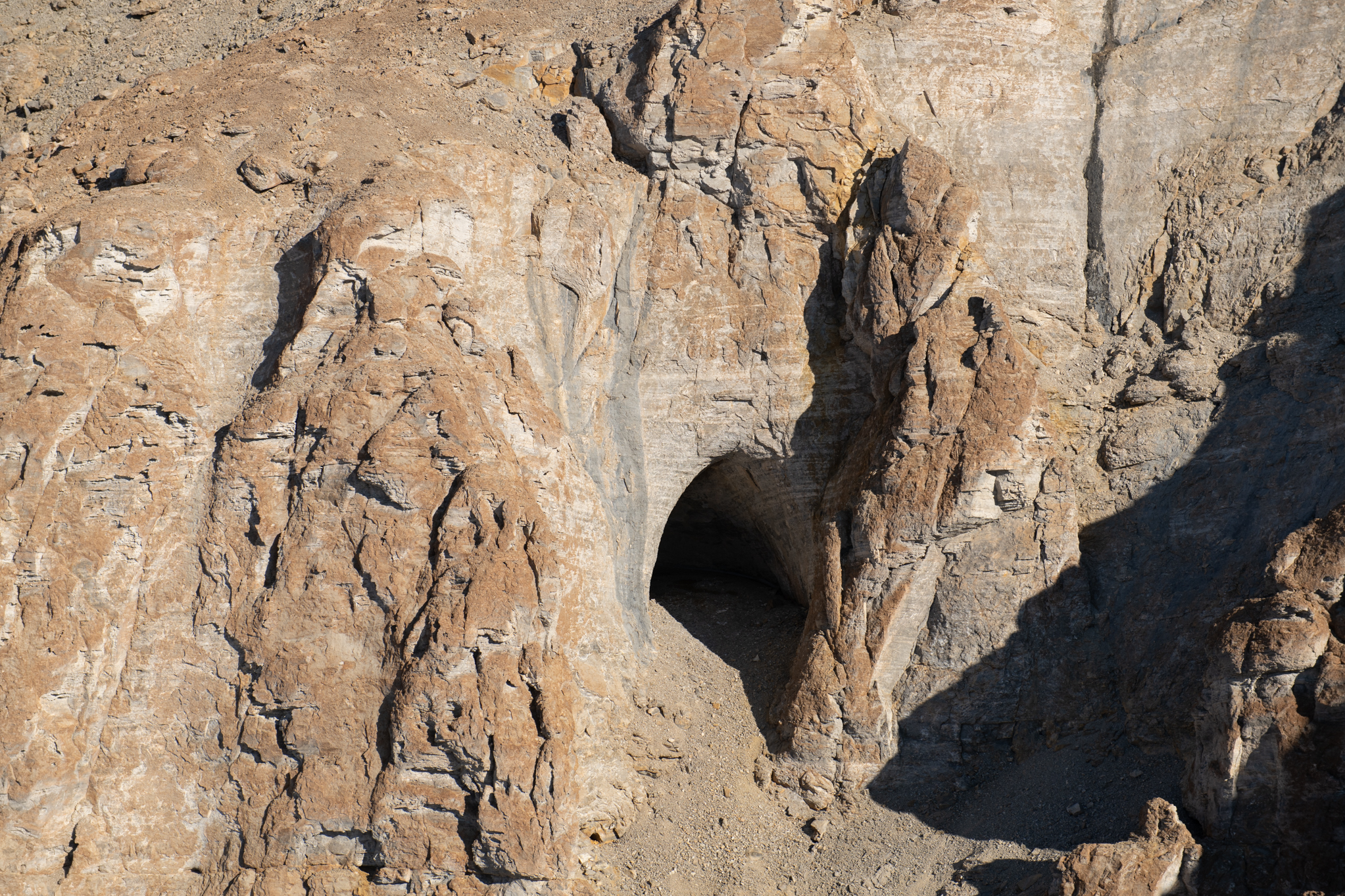
Photo: Robbie Shone
Researchers from four international universities have returned from an expedition to a remote area of north-east Greenland where they broke two records.
The team, comprised of researchers from the Universities of Innsbruck, Akron, Oxford, and Sheffield, documented and explored more than 30 caves that had never previously been visited. In doing so, they broke their own records for the longest explored cave in Greenland and the most northerly explored cave on the planet (at 80.41301, -21.68294).
Several samples were collected from the caves for geomicrobiology to determine the mechanism that allows microbial survival in these cold and dry caves, and the role that these species may play in the formation of unusual cave formations.
The expedition, which was funded through an FWF Start Prize to Professor Gina Moseley (Inst. Geology, Innsbruck), collected samples and undertook research into the region’s palaeoclimate and environment, geological history, former glacier extent, geomicrobiology, and entomology.
The palaeoclimate research will be used to improve understanding of how this region, which is highly sensitive to climate change, responds in a warmer and wetter world. The palaeoglaciology team collected 22 rock samples that, combined with contextual geomorphological mapping from the ArcticDEM high resolution digital surface model, will provide information about the timing of ice sheet recession and thinning in this little-studied, yet important region.
As the team had more financial support than previous expeditions, they were able to achieve everything Gina had hoped for and more. Given the high cost and difficult logistics, Gina wanted to maximise scientific potential. She therefore invited along a number of other scientists that would complement the palaeoclimate work.
The team included Prof. Hazel Barton, a cave geomicrobiologist from the University of Akron; Prof. Paul Smith, Director of the Oxford University Museum of Natural History with years of geological mapping experience in the region; Dr. Andrew Sole from the University of Sheffield, a glaciologist with particular expertise in the impacts of climate change on contemporary Greenland Ice Sheet processes; Dr. Ádam Ignéczi, also from the University of Sheffield, with expertise in glacial geomorphology, and Greenland ice sheet surface and bed topography; and Paul Töchterle, a Ph.D. student from the University of Innsbruck with expertise in permafrost studies from caves.
Additionally, the support team included medic Dr. Pete Hodkinson; photographer Robbie Shone; safety and rigging expert, Chris Blakeley, who works for Petzl; helicopter pilot Stig Erick Bjerkenås; and mechanic Hans Christian Sivertsen. Together, the team comprised seven nationalities in a truly interdisciplinary expedition.

Photo: Robbie Shone
Work in this region will continue for a number of years, thanks to the grant awarded to Gina last year and the team hopes to break those records yet again. They already have their eyes on as-yet unexplored caves even further north.
For a more complete report of this year’s expedition follow this link.
Correspondent: Gina Moseley
